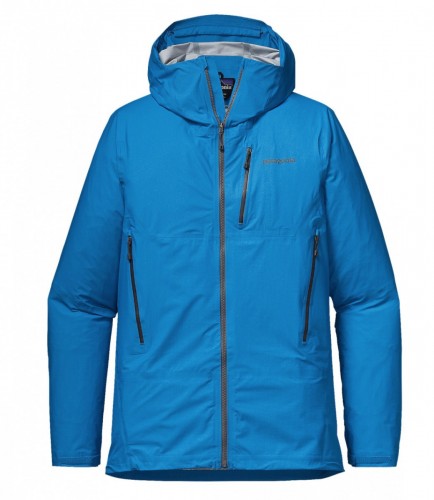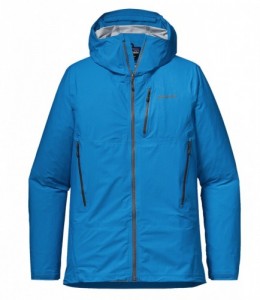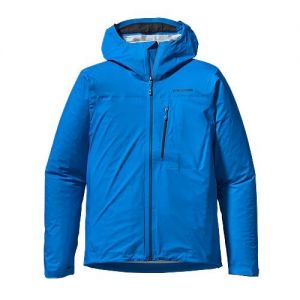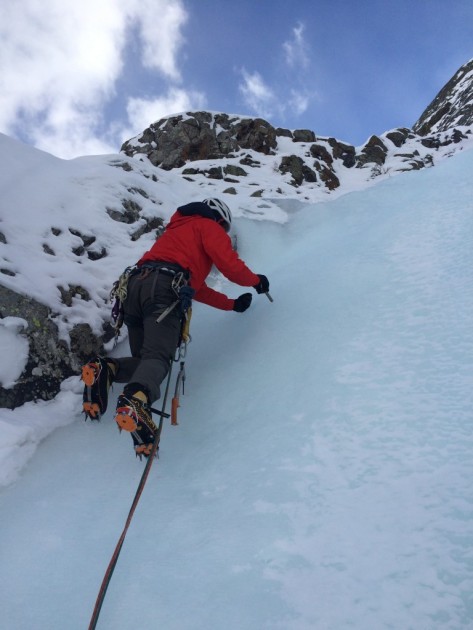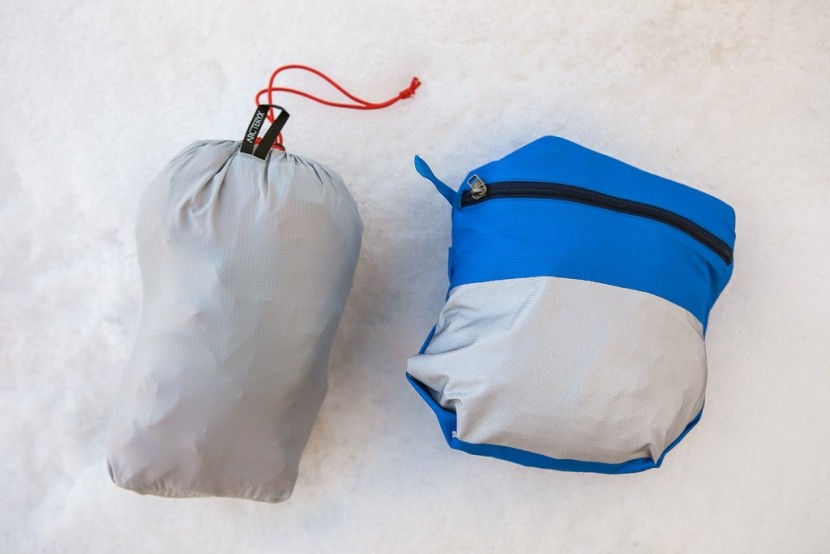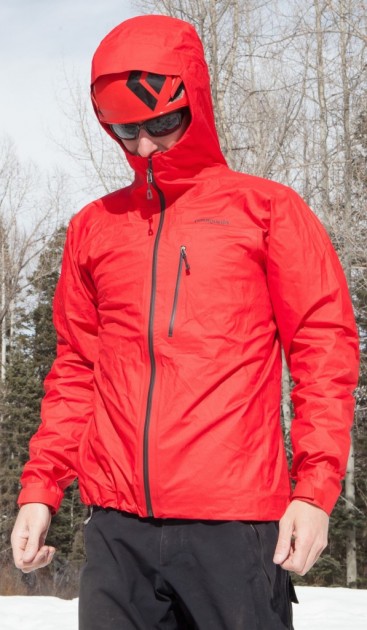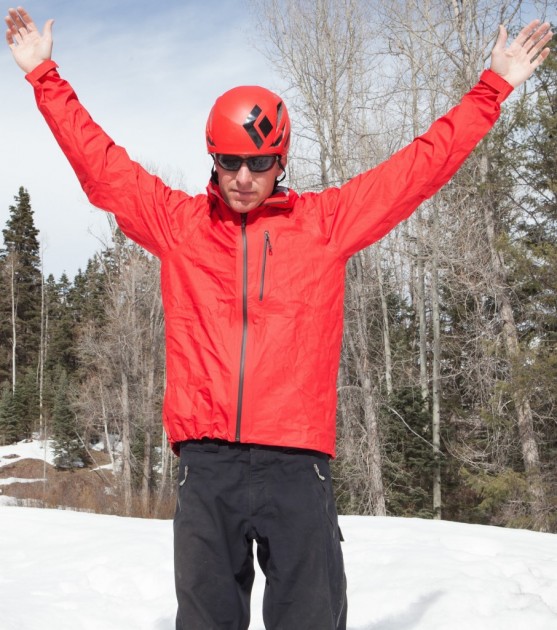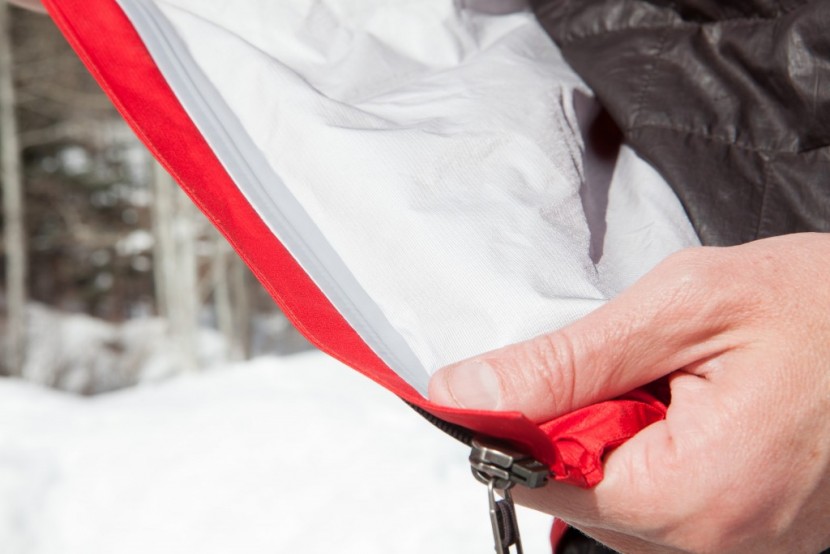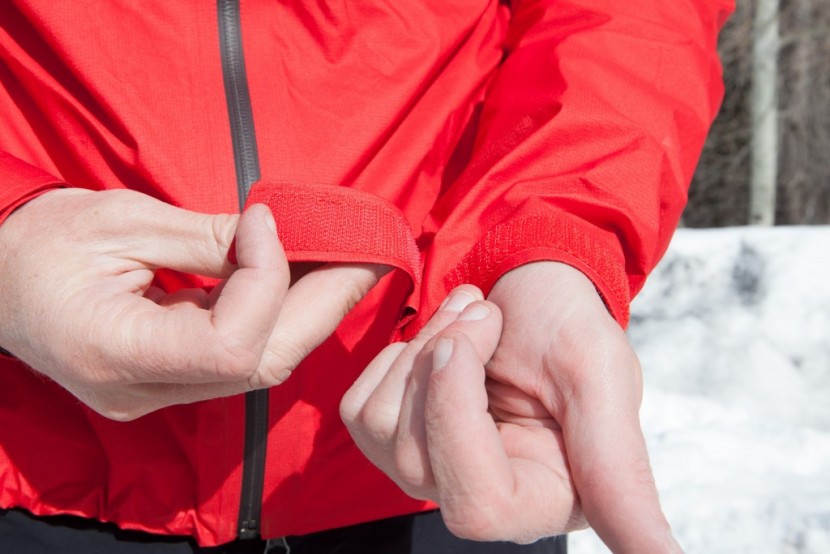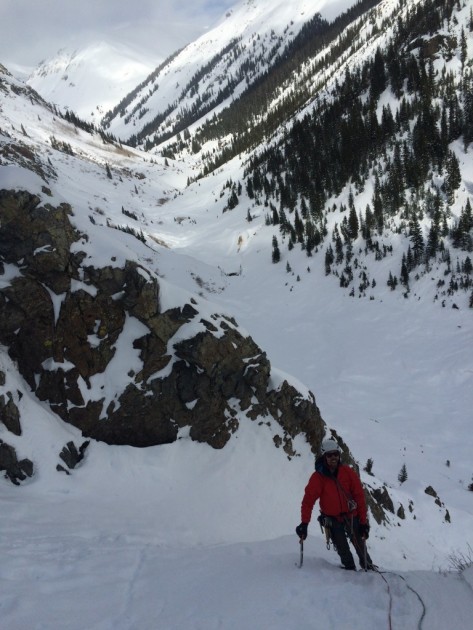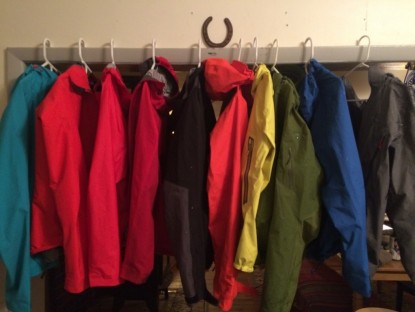Though the Patagonia M10 is fantastic, our testers prefer the Arc'teryx Alpha FL (4 oz. heavier) for alpine and ice climbing and backcountry skiing because of its more ergonomic fit, larger chest pocket, better aesthetics, and astonishing durability. For many people, and backpackers specifically, the M10 could be the best hardshell due to its extraordinary light weight and tiny packed size. It does come with a laundry list of limitations, however, and thus is only recommended for someone who needs a very specific type of jacket.
Patagonia M10 Review
Our Verdict
Though the Patagonia M10 is fantastic, our testers prefer the Arc'teryx Alpha FL (4 oz. heavier) for alpine and ice climbing and backcountry skiing because of its more ergonomic fit, larger chest pocket, better aesthetics, and astonishing durability. For many people, and backpackers specifically, the M10 could be the best hardshell due to its extraordinary light weight and tiny packed size. It does come with a laundry list of limitations, however, and thus is only recommended for someone who needs a very specific type of jacket.
Our Analysis and Test Results
The New Version of the Patagonia M10 Jacket vs. the Older Version
A few changes have occurred for the latest version of the M10, such as the addition of two harness-compatible hand pockets and a subsequent extra ounce of weight. The fit seems to have changed a bit as well, as several reviews we have read state that the new M10 has a baggier, more relaxed fit instead of the previous slimmer fit.
Check out the side-by-side comparison below, with the latest version of the M10 pictured on the left and the older version that we tested shown on the right.Here's a summary of the key differences between the new 2016 version and the older M10:
- Extra pockets added — The new M10 boasts two handwarmer pockets, which are placed a bit higher on the jacket so you're able to access them while wearing a harness.
- Fit has changed — Though we have not tested the new fit ourselves, in our research we came across several reviews which stated the newer cut of this jacket is not as slim as in previous years. Reviewers found the new fit to be baggier and more relaxed.
- Slightly heavier than previous model — The new M10 is about an ounce heavier than the old model, possibly due to the addition of the two new handwarmer pockets. Patagonia now lists the weight of the M10 at 9.4 oz.
Hands-On Review
The Patagonia M10 is a lightweight hardshell that is designed to do everything, but is best used as an emergency shell. It uses Patagonia's proprietary three-layer H2NO performance standard membrane that is simultaneously thin, breathable, waterproof, and stretchy. It is a minimalist jacket with a set of features designed to save weight at all costs. Sonically welded seams mean there is literally no stitching in the main body construction, which makes it more abrasion resistant, durable, and lighter. Patagonia considers this to be one of their top-of-the-line products for fast and light alpine climbing. However, we by no means think this is the best fast and light option in this review.
Weather Protection
Weight
At 8.8 ounces for a size large jacket, no other jacket was lighter than the M10. Due to what we find to be odd sizing in all of Patagonia's garments, we ordered ourselves a size medium this year, and found that it weighs only 8.1 ounces. Only the Marmot Nano AS packed down into a neat little package anywhere close to as small as the M10. In order to pack the M10 down, you can stuff the entire jacket into its chest pocket; there is also a reinforced clip-in loop for help storing it. These features made the M10 our favorite choice for backpacking and we gave it a 10 out of possible 10 points.
Mobility & Fit
This was clearly one of the most mobile jackets in our tests, receiving an 8 out of 10. The nylon face fabric is highly stretchable ripstop that moves with you as you move. We loved the stretchy fabric and the fit of the hood while wearing a helmet. The hood gripped the helmet perfectly and the entire hood opening turned with our head and face, as opposed to the storm hood on the Arc'teryx Theta AR, that doesn't grip the head as well and instead allows for movement inside the hood. The M10's sleeves were plenty long enough for swinging ice tools overhead, a major bonus for use while climbing, and not a feature present in all jackets. (In fact, short sleeves was one of our many complaints about the REI Shuksan II).
While the M10 is very mobile and supple, one thing that bothered us was the fit of the jacket. Last year we ordered a size large, exactly like every other jacket we tested, but found it to be boxy and quite large. Our head tester almost always wears a men's large, but this large was just too big. This year we opted for a size medium, and enjoyed the fit better, although we still wished it was trimmer in the chest, and we felt like the hem was just an inch or two short for optimal coverage. Regardless, if you have a frame that often lands you on the edge of sizes, we would recommend sizing down in Patagonia garments.
Breathability
Similar to the other lightweight alpine climbing jackets we tested, like the Arc'teryx Alpha FL or Westcomb Shift LT, the Patagonia M10 eschews any sort of pit zips or extra venting in the name of saving weight. If the H2NO standard membrane breathed better, then this would work out OK. But in our treadmill test we found the M10 to be our obvious lowest performer. Not only did we feel the absolute hottest while running in this jacket, but we found noticeable moisture built up on the inside of the jacket at both the neck and wrists. For this reason we only awarded it 5 out of a possible 10 points.
With that said, it would be unfair of us to not point out that our treadmill test provided only subjective test results, and there was no way to substantiate what we felt with numbers or concrete data. For that reason we didn't give out high scores for this category, and also didn't penalize the M10 too much. It is possible that lengthening the time spent running in each model or other similar changes would have allowed this jacket to breathe better - we aren't sure. So within the context of our testing, we stand behind the fact that the M10 seemed to breathe the least, but take our results with a grain of salt.
Features
This shell has the same set of features as our other favorite lightweight alpine climbing jackets: a helmet compatible hood, water tight zippers, single chest pocket, Velcro wrist closures, and a waistline draw cord. However, we feel that other jackets' features are a bit more refined and function a bit better. The M10 has only one hood adjustment point, and we wish it had three. We do love how the entire jacket stuffs into its own pocket, but we wish that the buckles on the draw cords were a little larger or easier to manipulate with gloves. Like the Arc'teryx Alpha FL, it features only a single chest pocket, but we found it to be a bit small for all of the things you would like to fit in there. In short, it doesn't have nearly the amount of cool features as the Outdoor Research Axiom or the Mountain Hardwear Torsun, but then again it wasn't designed to.
Best Applications
This is the lightest of the fast and light hardshells in this review, and in our opinion, it is best used as a back-up layer when you don't really want to carry it but feel like you should just in case. It is a good climbing shell in dryer climates. Additionally, its small packed size and light weight make it a good option for backpacking. With its poor grades in weather protection and breathability, we wouldn't recommend this shell to people that know they are going to encounter rough winter conditions or lots of rain.
Value
For only $399 a brand new M10 can be yours! Given what we feel is a limited range of application, we are not sure you should invest this much money in this jacket. While it is one of the more affordable ones we tested, for only a tiny bit more you can purchase the Editors' Choice winning Arc'teryx Alpha FL, which is a far more solid alpine-worthy hardshell.
Conclusion
The Patagonia M10 is an extremely lightweight and minimalist hardshell that is ideal for just-in-case or relatively fairweather use. Despite our reservations, it remains a highly versatile piece of gear that has been used by leading alpinists on crazy missions all over the world, so don't let us tell you what can or can't be done with it. Compared to many of the jackets in this review it is pretty affordable and is backed by Patagonia's Ironclad Guarantee.


